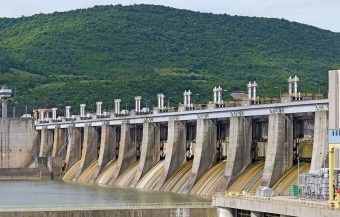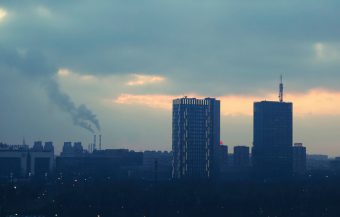
Energy transition in Serbia is a complex process that unfolds amidst economic, political, and technological challenges. The National Integrated Energy and Climate Plan sets goals such as achieving a 33.6 percent share of renewable energy in gross final consumption by 2030. On the other hand, the Energy Development Strategy envisions that by 2050, the domestic energy sector will be as carbon-neutral as possible.
However, Ognjan Pantić from the Belgrade Open School highlights that these goals lack ambition and are not aligned with the obligations of the Paris Climate Agreement, the Green Agenda for the Western Balkans, and the Energy Community. A lack of political will, slow implementation of laws, and heavy reliance on coal, which accounts for 70 percent of Serbia’s total electricity production, further complicate achieving these goals.
“It is necessary to accelerate the transition to renewable energy through investments in green infrastructure and the modernization of the energy grid. Increasing energy efficiency is also crucial, requiring better support programs for households and industry. Adjusting the legal framework in line with European standards is essential to facilitate a faster transition to clean energy. Progress is visible but insufficient. Serbia uses some renewable energy sources, such as hydropower and wind farm construction. Still, this process needs to be sped up, particularly by expanding the use of solar energy, especially by supporting the establishment of energy cooperatives that involve entire communities in energy production and democratize the coal transition process,” Mr Pantić emphasizes.
IN FOCUS:
- Vienna on the Path to Climate Neutrality
- K2 WallPV – the System Solution for Solar Projects on Building Facades
- Sustainability Starts on the Roof
Pollution and Air
Quality Air pollution is a serious problem in Serbia, which is still considered an ecological blind spot in Europe. Coal-fired power plants significantly contribute to the emission of harmful gases, negatively affecting citizens’ health and the quality of the environment.

“Serbia must align its regulations with EU standards, which include stricter emission regulations, more efficient pollution monitoring, and penalties for violations. It is essential to inform citizens about the benefits of the energy transition. Public discussions, such as the current one on the Energy Development Strategy until 2030, should be more comprehensive. The trend of organizing public consultations during holiday seasons is not in line with the principles of the Aarhus Convention, which is based on transparency and public participation in environmental decision-making,” says Mr Pantić. He adds that investments are needed in developing green technologies and creating new jobs in the renewable energy sector. This would simultaneously contribute to economic development and pollution reduction.
According to the latest data, air quality in Serbia has not significantly improved. Over 20 cities and agglomerations, home to more than four million people, are facing excessive pollution. The largest emitters of pollutants are heating plants and individual heating systems, while the industrial sector and coal-fired power plants also contribute to PM2.5 and PM10 particle emissions.
“The first step toward clean air for all was taken, though belatedly, at the end of 2022, when the National Air Protection Program with an Action Plan was officially adopted.
The vision outlined in this document is that by 2030, Serbian citizens will breathe clean air, which requires significant financial resources and ambitious measures. A key measure is the replacement of existing heating systems in households with new devices that comply with eco-design standards and heat pumps. Financial incentives need to be provided for this, and the priority cities are Kragujevac, Belgrade, Niš, Valjevo, and Užice,” our interlocutor explains.

It seems that citizens are becoming increasingly aware of air pollution issues, and their pressure, combined with the contributions of the media, civil society organizations, activists, and the expert community, has led to some progress in air protection policies over the past few years. The focus is slowly shifting from air quality measurement to measures for cleaner air.
In all these changes, the views and opinions of young people can be of great importance. Research conducted by the National Youth Council of Serbia and UNICEF through the U-Report survey and the WWF Adria study, The Untapped Potential of Youth in Decision-Making, indicates that young people in Serbia are concerned and interested in environmental issues. Environmental protection has been recognized as one of the top three most important areas in today’s society. Although young people are aware of the problems and the poor state of the environment, they are often insufficiently informed about international agreements and just energy transition. There is frequent criticism of the education system, with young people frequently voicing dissatisfaction with the lack of focus on environmental issues in the school curriculum. Educating youth about the just energy transition should take place through communication channels familiar to them, such as social media (Instagram, TikTok, etc.), using language tailored to this target group.
Prepared by Milica Radičević
The story was published in the new issue of the Energy portal Magazine ENERGY TRANSITION

